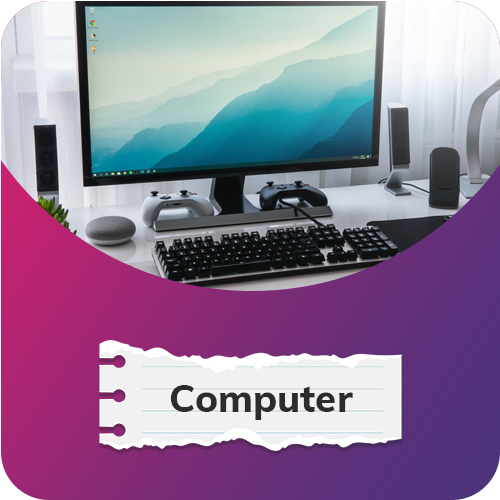
Computer Science is more than just learning to use a computer—it is the study of computation, algorithms, data, networks, software systems, and the principles of problem-solving using technology. As the world rapidly digitizes, computer science has evolved into one of the most crucial subjects in school education. From foundational digital literacy in primary years to programming, cybersecurity, and artificial intelligence in secondary and senior secondary stages, computer science fosters analytical thinking, innovation, creativity, and real-world problem-solving.
Taught across various global curricula—CBSE, ICSE, IB, IGCSE, American Common Core, British National Curriculum, and others—computer science equips students to become not just consumers of technology but creators of it. It is interdisciplinary, drawing on mathematics, logic, language, and science, and prepares students for a tech-driven future in every career field, from medicine and law to entertainment and engineering.
In the early years, computer science begins with the basics of digital literacy, technology use, and logical thinking. The focus is on:
Curricula like CBSE, British Key Stages 1 and 2, and the IB PYP integrate computer learning with other subjects using inquiry-based approaches. In many international schools, technology is embedded across the curriculum, and students use digital tools for storytelling, data representation, and creative expression. At this stage, the goal is to help children build confidence with technology, understand basic logic, and communicate using digital tools, forming the bedrock of computational thinking.
In middle school, computer science becomes more structured. Students are introduced to:
CBSE ICT curriculum emphasizes basic coding, data handling, and digital citizenship. The British curriculum (Key Stage 3) introduces programming using high-level languages, abstraction, and data structures. ICSE offers computer applications as an elective subject. In the IB MYP, computer science is inquiry-driven, project-based, and encourages students to think critically about the ethical and social implications of technology.
Students begin building projects like quizzes, animations, or simple games—boosting their logic, design skills, and confidence in programming. Exposure to block-based and text-based environments fosters a smooth transition toward advanced computer science concepts in high school.
At this level, students engage with more theoretical and practical aspects of computer science:
CBSE Grade 9–10 includes “Computer Applications” or “Artificial Intelligence” modules. ICSE offers “Computer Applications” as an elective with Java or Python programming. The IGCSE Computer Science course covers programming logic, systems architecture, networks, and software development lifecycle.
By the end of Grade 10, students can write modular programs, build websites or databases, and understand the fundamentals of computing systems, preparing them for advanced-level specialization. This stage encourages computational problem-solving, algorithmic thinking, and an understanding of technology’s societal role.
Computer Science becomes a core academic subject for many students at this stage. It is often chosen by those pursuing science, mathematics, or commerce streams. The curriculum includes:
CBSE Grade 11–12 Computer Science focuses on Python, relational databases, and computational logic. Students also undertake a major project, applying skills in real-world contexts. ISC Computer Science includes Java programming, data structures, and computing theory. The IB Diploma Programme (Computer Science HL/SL) explores system fundamentals, control systems, database modeling, and internal assessments involving detailed software projects.
A-Level Computer Science (Cambridge, Edexcel, Oxford AQA) includes both theoretical concepts (computational theory, Boolean logic, systems architecture) and practical skills in building software systems. AP Computer Science A (offered in U.S. and international schools) is equivalent to a first-semester college course in programming and software development, typically taught in Java.
At this stage, students are taught how computing principles intersect with real-world systems. Emphasis is placed on building scalable, maintainable software, collaborative problem-solving, and understanding the ethical implications of digital innovation.
Computer Science has transcended the status of an elective to become an essential subject in preparing 21st-century learners. Whether in smart cities, climate modeling, financial analytics, healthcare, or digital arts, computational literacy is key. Curricula like IB, IGCSE, CBSE, AP, and British A Levels are increasingly making computer science integral, recognizing its application across STEM, business, law, design, and social sciences.
As students gain deeper exposure, they learn to analyze, automate, visualize, and innovate—traits vital for tomorrow’s researchers, entrepreneurs, and ethical digital citizens.
Assessment is both formative and summative, involving:
Computer Science is a future-ready subject that empowers students to understand, shape, and lead in the digital world. It instills a structured way of thinking, the ability to design intelligent solutions, and the skills to navigate a data-driven society. Taught progressively across grades—from basic computing and visual coding in early years to AI, cybersecurity, and advanced programming in higher secondary school—it bridges theory with application and thought with action.